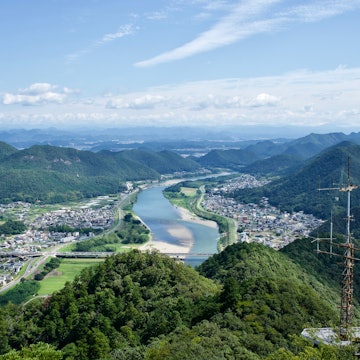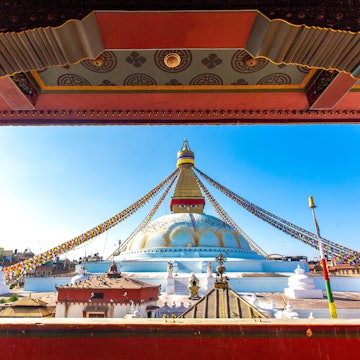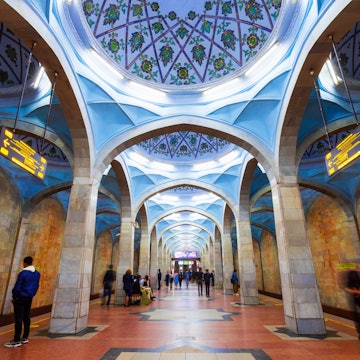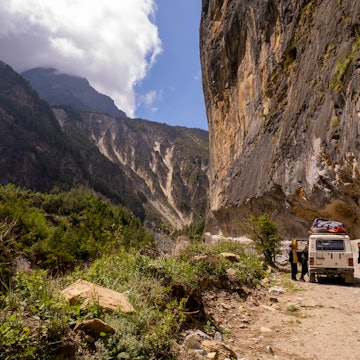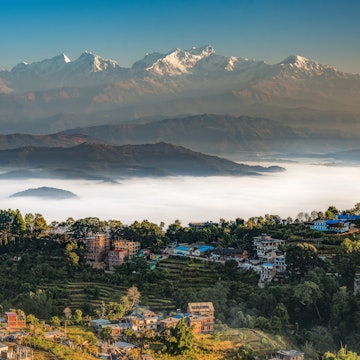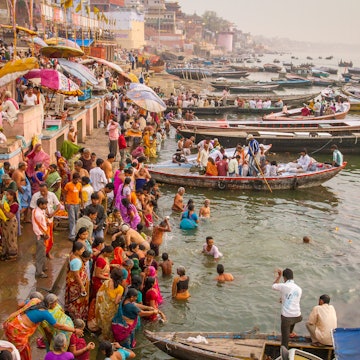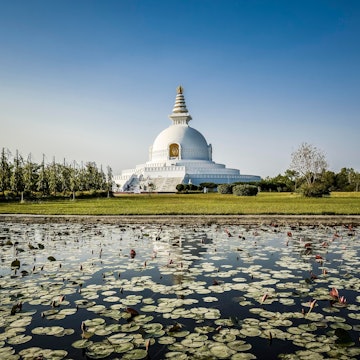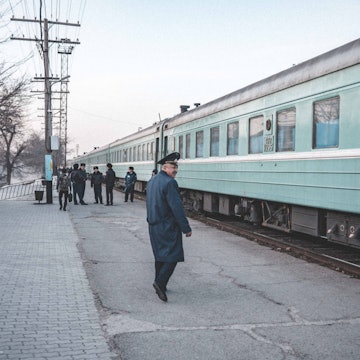

From applying for an e-Visa to extending your stay, here's what you need to know about entry requirements for India.
With its dense tapestry of cultures and landscapes, India feels like dozens of countries rolled into one, but a single visa will cover you for travel across more than 3 million sq km (1.2 million sq miles) of territory, taking in everything from steamy jungles and sacred cities to palm-shaded beaches and the high passes of the Himalayas.
Every Indian state is as large and diverse as a nation, so it pays to take your time navigating this enormous and fascinating country. The good news is that visas are easy to obtain and the permitted length of stay allows plenty of time for exploring.
Here’s everything you need to know about visa requirements for India, from the application process for e-Visas to overland travel and extending your stay.

You'll probably need a visa to go to India
Almost everyone needs a visa to visit India, but for most nationalities, tourist visas are easy to obtain, either online or through an Indian embassy or consulate. Citizens of 172 countries – including most nations in the EU and EEA, the UK, the US, Canada, Australia and New Zealand, and many countries in Asia, Africa, the Middle East and Latin America – can apply for an e-Visa before traveling via a simple online form.
Applying online is a fairly painless process, and it will save you hours compared to applying in person at an embassy – or through a visa agency, in countries where Indian embassies no longer issue visas directly. It's also the easiest way to get a long-duration visa covering multiple entries to India.
Tourist e-Visas are available with a validity of 30 days, one year or five years. The 30-day visa allows two entries into India, which is handy if you’re planning a side trip to Nepal, and you can apply up to 30 days in advance of travel.
One-year and five-year visas allow multiple entries, with a maximum stay of 180 days on each visit – well worth considering if you think you might visit India again in future. Applications are accepted up to 120 days in advance of travel.
Costs vary depending on your nationality and the duration of the visa, so check the e-Visa portal for the latest information. All e-Visas take at least 72 hours to process, so be sure to apply in plenty of time (at least 4 days in advance is recommended).

Applying online is the most hassle-free way to obtain a visa
The Indian government’s online e-Visa portal can be used to apply for tourist visas, business visas, and visas for medical treatment and attending conferences. The cost and duration of the visa varies depending on your nationality and the class of visa, and you'll need to upload a digital photo. You may also need to show proof of return travel arrangements and sufficient funds to support yourself during your trip.
Rules for non-tourist visas can be complex. Business travelers usually need to provide letters of introduction from Indian companies and organizations that they plan to meet. Assuming you meet the requirements, business visas are usually valid for a year and allow multiple entries, with a stay of up to 180 days on each visit.
Working for an Indian company is more complicated. You’ll need an employment visa and a work permit – in most cases, this means you need a firm job offer and assistance from an Indian employer to complete the paperwork. As with all visa requirements, the situation is subject to change; contact your local Indian embassy or consulate for the most up-to-date information.
Applying for a tourist e-Visa is fairly straightforward
To apply for an Indian e-Visa, visit the government’s official e-Visa portal. You’ll need to upload a digital passport-style photo and copies of your passport ID pages, and pay the visa fee, which varies depending on your nationality and the duration of the visa.
Your passport must be valid for six months beyond the date of entry, and you’ll need two spare pages for the visa, which will be physically stamped into your passport on arrival. Assuming your application is accepted (which is the case for most applicants), you’ll receive a digital Electronic Travel Authorization (ETA), which you should print out and carry with you when you travel, so you can present it to the immigration authorities on arrival.
Note that in some cases, airlines may ask you to confirm your visa online when you check in, so make sure you have your mobile phone or laptop to hand and can get online at the airport.

Where can I enter India with an e-Visa?
E-Visas allow entry to India through 31 designated airports, at Ahmedabad, Amritsar, Bagdogra, Bengaluru, Bhubaneshwar, Kozhikode (Calicut), Chennai, Chandigarh, Kochi (Cochin), Coimbatore, Delhi, Gaya, Goa-Dabolim, Goa-Mopa, Guwahati, Hyderabad, Indore, Jaipur, Kannur, Kolkata, Lucknow, Madurai, Mangalore, Mumbai, Nagpur, Port Blair, Pune, Tiruchirapalli, Trivandrum, Varanasi and Visakhapatnam.
They’re also valid for entry via the designated seaports at Mumbai, Chennai, Kochi, New Mangalore and Mormugao (in Goa).
Apply for a visa before you travel to enter India overland
If you plan to enter India overland – for example, from Nepal, Bangladesh or Pakistan – you’ll need a visa stamped into your passport before you arrive, which you’ll need to obtain from the Indian embassy or consulate in your home country, or through an approved visa application office.
If you plan to visit India and Nepal on the same trip, get a multiple-entry visa – it used to be possible to arrange a new Indian tourist visa through the Indian Embassy in Kathmandu, but the authorities may now insist on a two-month gap before issuing a new visa.
There’s no need to worry about applying for a visa for Nepal in advance – they’re available on arrival at border crossings (bring passport photos and US dollars to pay the fee).
If you can't apply for an e-Visa, get one in person in advance
Contact your local embassy or consulate to check the application process in your country; the Indian Ministry of External Affairs maintains a list of diplomatic missions online. It’s best to apply for a visa in your home country – obtaining an Indian visa from an embassy in another country can be tortuously slow, assuming it’s permitted at all. Fees and the permitted duration of stay will vary depending on your nationality.
As an alternative to applying through an Indian embassy or consulate, you may be able to apply for a visa through a visa agency – however, this tends to be more expensive than applying directly. In practice, many of these agencies just collect together applications and then send over a staff member to the embassy to apply in person.

Student visas are available to those on full-time courses in India
Student visas are reserved for people enrolled in approved full-time educational courses in India (which can include training courses in yoga, meditation, music and traditional Indian art forms). Student visas are valid for up to five years, depending on the length of the course, but the rules are strict, and you’ll need documentation from the institution where you are studying to apply. The Ministry of Home Affairs provides some information online, but contact your local Indian embassy or consulate for the most up-to-date requirements.
Extending your stay in India is only possible in exceptional circumstances
E-Visas cannot be extended, but other types of visas can, though only in exceptional circumstances, such as a medical emergency or the theft of your passport. To apply, you’ll need to use the government’s special online portal, providing evidence of a valid reason for extending your stay in India (such as a letter from the hospital where you are being treated or a police report).
You may then be called in for an in-person interview at the Foreigners’ Regional Registration Office (FRRO) in Delhi. If there is a fee, it will be made clear during the application process.
Some border areas in India require additional travel permits
Under a system carried over from British colonial rule, special permits known as “protected area permits” or “restricted area permits” are required to visit many areas close to India’s disputed external borders with China, Pakistan and other territories – a zone known as the “inner line.” This includes several states in India's less explored Northeast. Applying for these permits outside India is tricky, but you can usually apply locally in India without too much difficulty.
Permits are especially important for highly sensitive border areas (where some places may be off-limits to all travelers, or only open to Indian citizens). Applications can be made through local government offices or local travel agencies; contact the state government offices for these regions to get the latest information. In some areas, you may need to register with the local Foreigners Regional Registration Office on arrival, but this is an easy process.








